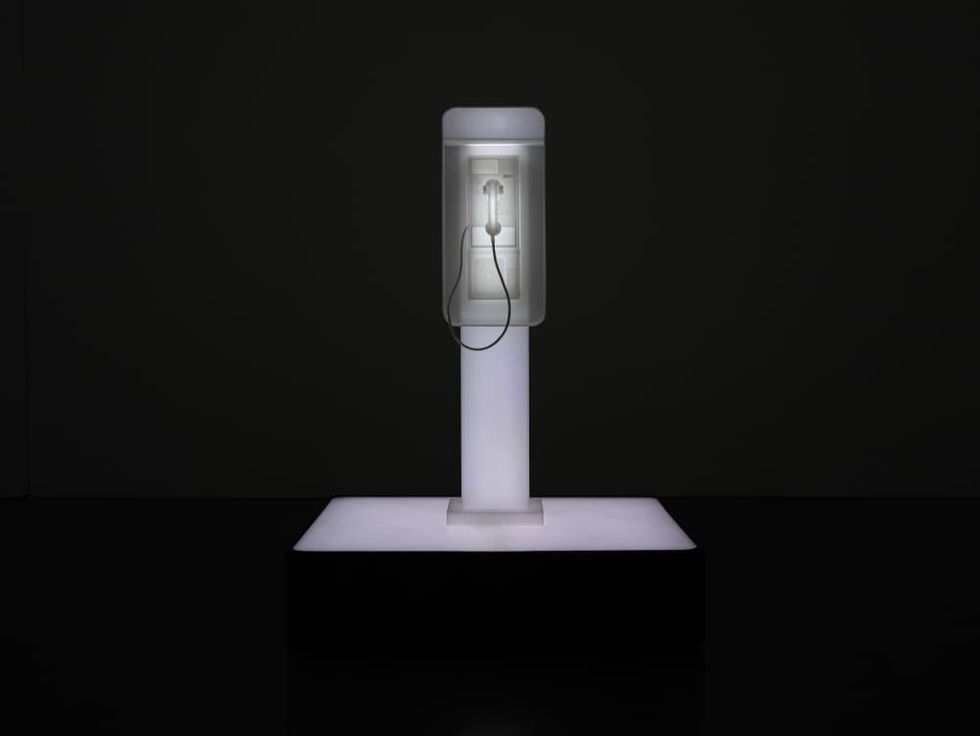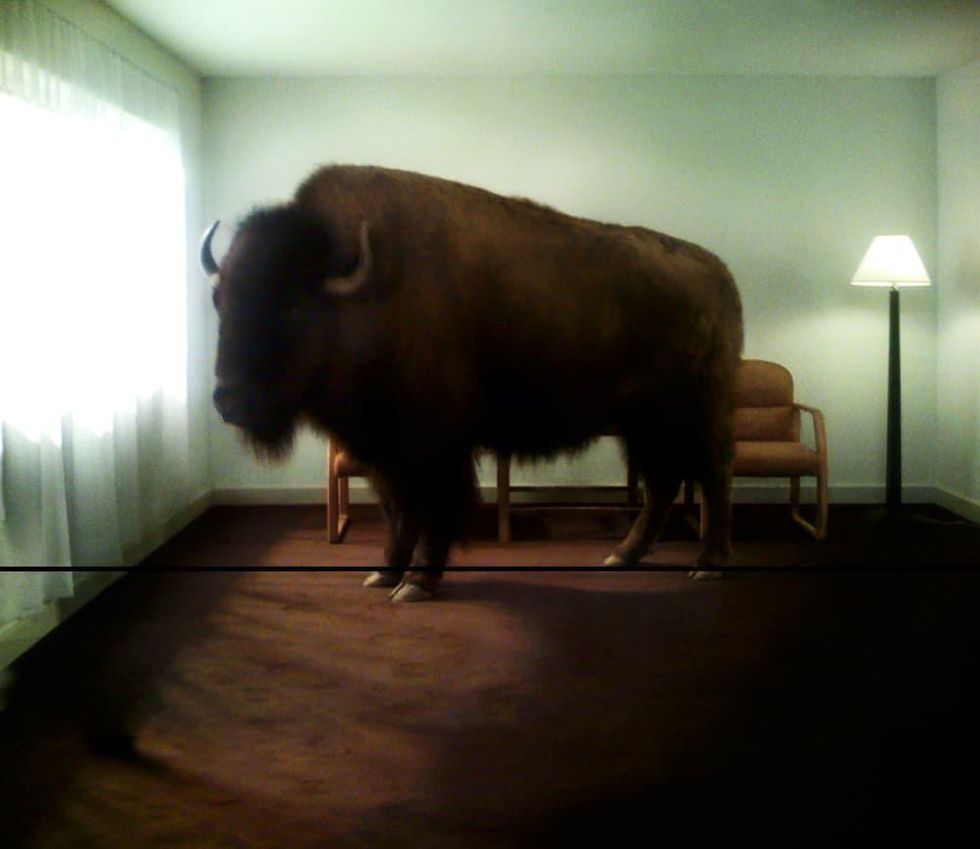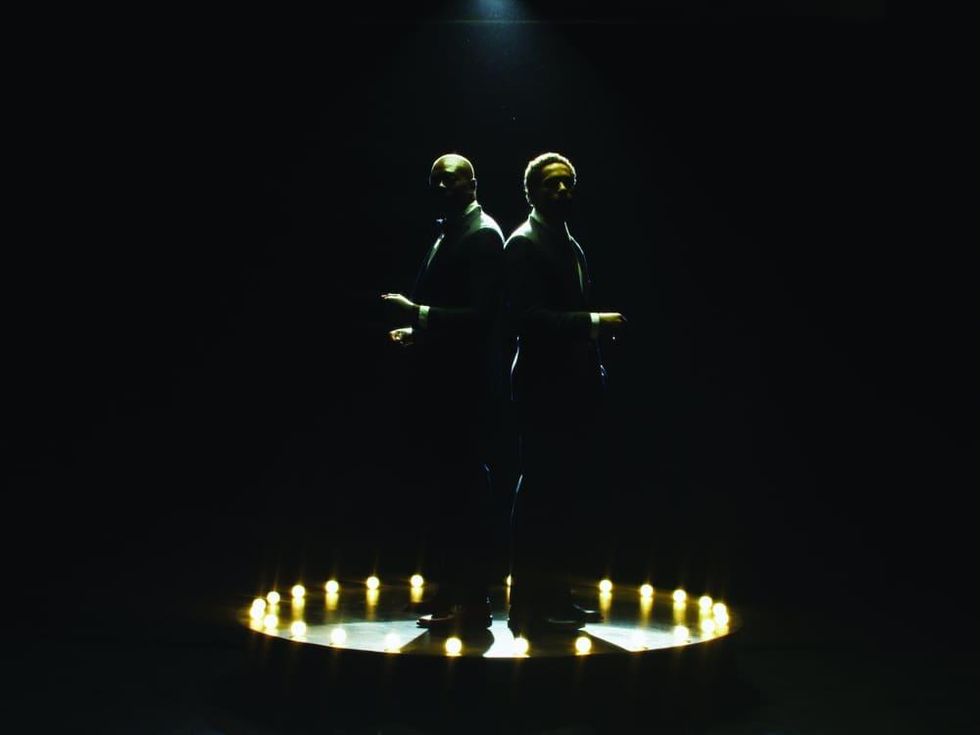Electric Dreams
Dare to engage at Modern Art Museum of Fort Worth's latest exhibition
Engaging with a work by Doug Aitken is an act of ultra-sensory contemplation.
Whether it's 2014’s freestanding resin phone booth twilight (which glows or dims depending on how many viewers cluster near it) or an immersive video installation such as 1997’s diamond sea (a virtual stroll through the computer-controlled Namib Desert diamond mine), his pieces demand a moment of reverie in an over-stimulated world.
The subject of a new career survey at the Modern Art Museum of Fort Worth, Aitken’s “Electric Earth” highlights four of the artist’s iconic video projections along with photography, sculpture, and text-based wall reliefs. It’s an impactful introduction to Aitken’s themes, which include isolation, transience, environmental degradation, and the commercialization of social relationships.
Originally trained in magazine illustration and graphic art, the Redondo Beach native emerged in the mid-1990s as one of the third wave of Los Angeles artists. With spiritual descendants such as Ed Ruscha, Nam June Paik, and Bruce Nauman, and a cinematic vision influenced by experimental film, Aitken evolved his oeuvre over the past few decades from early collages to alternate digital universes.
Organized by director Philippe Vergne for the Museum of Contemporary Art in Los Angeles last year, “Electric Earth” is the result of Vergne’s 18-year relationship with Aitken.
“They had known each other for decades and worked together on other projects,” says the Modern’s Alison Hearst, who serves as the exhibition’s local curator. “It was Philippe’s coming to MOCA LA which prompted him to look at Doug, who is kind of the quintessential L.A. artist. They worked on the show for quite some time — I can’t imagine how difficult it must have been for Philippe to narrow it down in the first place, there are so many site-specific projects.”
It was equally difficult to narrow the work down for the Modern’s cozier environs. Moving to nearly a third of its original square feet meant a more honed edit was in order, although some of Aitken’s installations that didn’t fit the space (such as the Chloe Sevigny-starring black mirror) will be screened in the Modern’s theater Tuesday through Friday from 11 am to 2 pm and Saturdays from 10 am to noon.
Among the works that did fit is the show’s blockbuster opener Song I, an in-the-round videoscape that originally adorned the outside of the Hirshhorn building in Washington, D.C. A study of factory workers, drivers stuck in traffic, Doo-Wop musicians, and celebrities like Tilda Swinton and John Doe singing the classic ballad “I Only Have Eyes For You,” Song I brings its co-stars and viewers together through music’s universal connection.
“The themes of community and communication occur over and over again [in the work],” explains Hearst. “Song I is really about inviting people from all walks of life through this simple idea of one song coming through the airwaves. It’s about this common experience that we’re all in it together, no matter what part of life we come from.”
This holds true for Atiken’s wall pieces as well. 1968 may be a direct reference to the artist’s birth date, but it also alludes to the pivotal year when we lost Martin Luther King Jr. and Robert Kennedy, when the political climate of America and Europe came to a boil. Interpreted as a mirrored, shimmering sculpture, it has the glossy allure of a posed model on a billboard, the classic appeal of the Marlboro Man.
“He chose that year because it was a pivotal moment for people, but the work is more connected to traditional methods of advertising — it’s slick and sexy and glossy. It’s totally L.A. and he’s using the language of Hollywood and advertising to communicate ideas rather than selling a product,” says Hearst.
However one interprets “Electric Earth” — even how the sculptures and videos are viewed — is strictly up to the individual, and Aitken prefers it that way.
“People who don’t normally seem to respond to video art have been responding to this show,” says Hearst. “They can come in at any point and still get it. [The work] is lush and beautiful and great to watch, but you don’t feel like you’re missing out on any dialogue. He really wants the viewer to be the protagonist. It’s like a choose-your-own adventure."
---
"Doug Aitken: Electric Earth" runs through August 20 at the Modern Art Museum of Fort Worth.



